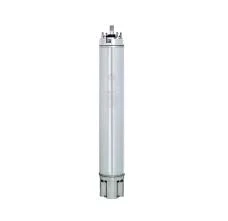Nov . 06, 2024 14:16 Back to list
sewage submersible pump
Understanding Sewage Submersible Pumps A Key Component in Wastewater Management
Sewage submersible pumps play a crucial role in managing wastewater and ensuring that sewage is effectively transported from residential and commercial areas to treatment facilities. These pumps are designed to operate while submerged in fluids, making them ideal for applications involving relatively high levels of waste and effluent.
How Sewage Submersible Pumps Work
At the core of a sewage submersible pump is a robust motor that drives an impeller. When the motor spins, the impeller creates a pressure differential, sucking sewage in through the inlet and pushing it out through the discharge pipe. This design allows the pump to handle solids and debris, which are common in wastewater. The submersible design eliminates the need for a separate pump house and complex piping systems, allowing for easier installation and maintenance in confined spaces such as basements, wet wells, or septic tanks.
Applications of Sewage Submersible Pumps
Sewage submersible pumps are commonly used in various applications, including municipal wastewater treatment, construction sites, and residential settings. In municipalities, they play a vital role in pumping sewage from collection points to treatment plants. Their ability to handle solid waste makes them particularly useful in handling the byproducts of human activity, which can include everything from toilet paper to food waste.
sewage submersible pump

In construction sites, these pumps are indispensable for dewatering operations. They help remove excess water accumulated during excavations or heavy rains, thereby keeping work areas safe and manageable. In residential settings, particularly in homes situated below the main sewer line, submersible pumps are essential for lifting sewage to a higher elevation for proper disposal.
Advantages of Sewage Submersible Pumps
One of the primary advantages of using sewage submersible pumps is their energy efficiency. These pumps can operate continuously without requiring a lot of energy, leading to lower operational costs over time. Additionally, since they are submerged, they produce less noise compared to other types of pumps, making them suitable for use in residential neighborhoods.
Furthermore, submersible pumps are generally more durable and reliable, owing to their robust construction, which protects them from the harsh conditions of wastewater environments. Many models are equipped with features like float switches and built-in thermal overload protection, which enhances their longevity and performance.
Conclusion
In summary, sewage submersible pumps are vital components in modern wastewater management systems. Their design, versatility, and efficiency make them essential for both urban and rural applications. As the demand for sustainable wastewater solutions continues to grow, the importance of reliable sewage submersible pumps will only increase, securing their place in the future of environmental management. Whether in a bustling city or a quiet neighborhood, these pumps help maintain the health and safety of our communities.
-
Submersible Water Pump: The Efficient 'Power Pioneer' of the Underwater World
NewsJul.01,2025
-
Submersible Pond Pump: The Hidden Guardian of Water Landscape Ecology
NewsJul.01,2025
-
Stainless Well Pump: A Reliable and Durable Pumping Main Force
NewsJul.01,2025
-
Stainless Steel Submersible Pump: An Efficient and Versatile Tool for Underwater Operations
NewsJul.01,2025
-
Deep Well Submersible Pump: An Efficient 'Sucker' of Groundwater Sources
NewsJul.01,2025
-
Deep Water Well Pump: An Efficient 'Sucker' of Groundwater Sources
NewsJul.01,2025
-
 Submersible Water Pump: The Efficient 'Power Pioneer' of the Underwater WorldIn the field of hydraulic equipment, the Submersible Water Pump has become the core equipment for underwater operations and water resource transportation due to its unique design and excellent performance.Detail
Submersible Water Pump: The Efficient 'Power Pioneer' of the Underwater WorldIn the field of hydraulic equipment, the Submersible Water Pump has become the core equipment for underwater operations and water resource transportation due to its unique design and excellent performance.Detail -
 Submersible Pond Pump: The Hidden Guardian of Water Landscape EcologyIn courtyard landscapes, ecological ponds, and even small-scale water conservancy projects, there is a silent yet indispensable equipment - the Submersible Pond Pump.Detail
Submersible Pond Pump: The Hidden Guardian of Water Landscape EcologyIn courtyard landscapes, ecological ponds, and even small-scale water conservancy projects, there is a silent yet indispensable equipment - the Submersible Pond Pump.Detail -
 Stainless Well Pump: A Reliable and Durable Pumping Main ForceIn the field of water resource transportation, Stainless Well Pump has become the core equipment for various pumping scenarios with its excellent performance and reliable quality.Detail
Stainless Well Pump: A Reliable and Durable Pumping Main ForceIn the field of water resource transportation, Stainless Well Pump has become the core equipment for various pumping scenarios with its excellent performance and reliable quality.Detail
